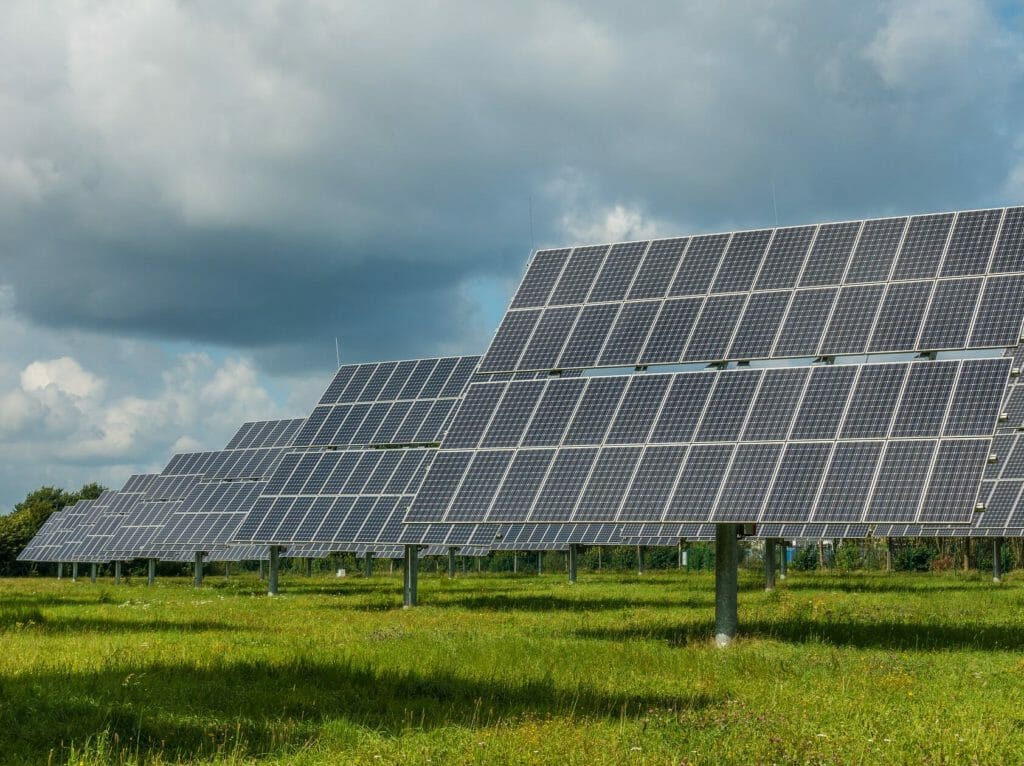Initiatives in the UK and USA are transforming solar farms into pollinator friendly bee meadows.
An environmental conscience has inspired many a budding bee keeper. Bees, after all, are essential to the survival of our ecosystems and the health of our planet. The same motivations has seen demand increase for greener, renewable energy. But every solar farm installed needs a vast swathe of land that, unfortunately, often ends up covered in turf or gravel. But initiatives around the world are showing a smarter way to do things. Renewable energy companies and environmentalists are transforming solar farms into pollinator friendly habitats. Hello solar farm bee meadows!
This trend goes back as far 2004 in the UK. This was the year that British renewable energy developer Ecotricity restored its first woodland. They planted a tree for each of its first 20,000 customers near its first windmill at Lynch Knoll in Gloucestershire. The idea was “to give the land back to nature: to let it run wild and create vital habitats for all sorts of creatures”.
Then, in 2011 the company became one of the first “bee guardian” businesses in the UK for its plans to create a “bee haven” at its solar farm in Lincolnshire. They planted a 20,000-panel solar farm with native wildflower seeds to encourage bees and insects to the site.
They’ve since expanded on their mission with social initiative “The Pollinator Promise”. Then, there is their mobile phone network provider Ecotalk. Powered by 100% green energy from the wind and sun, profits from Ecotalk customers’ bills go towards buying more land to “give back to nature”.
Ecotalk says it is “focusing on providing new homes for bees first – so each time you use your phone on Ecotalk, you’ll be helping us ‘put the bee back in Britain’. By making homes for bees, we’ll be creating new habitats for all wildlife.”
Meanwhile, approval came through for Ecotricity’s latest Sun Park project in Devon in 2016. Locals expect the bee meadow to have a “big impact on local biodiversity, creating a species-rich meadow which would benefit our brilliant bees and farmland birds”.
Another European solar company has followed suite. In 2013 Habitat Aid reported on a new partnership with Solarcentury to supply native hedge plants and wildflower seed for their solar farms. They had also brokered a deal with Bumblebee Conservation to advise Solarcentury on running bee friendly sites.
In the 2015 it was reported that Solarcentury planned to source 80,000 new plants from local nurseries for its solar farm bee meadows that financial year. Currently, Solarcentury continues to establish new, STA 10 Commitments compliant solar farms across Europe.
Meanwhile, USA clean energy initiative Fresh Energy also their sites on solar farms in Minnesota. In 2017 they wrote on their website that their home state had “more than 4,500 acres of ground-mounted solar in process or slated for development.” This provided “an opportunity to establish habitat equivalent to more than 2.5 million homes each having a six-foot-by-twelve-foot backyard pollinator garden”.
Fresh Energy credit the UK’s “long and well-documented success using pollinator habitat on solar sites” as inspiration. In 2016 they lead an effort to establish the nation’s first statewide standard for vegetation on solar sites. So at least in Minnesota, bee meadows on solar farms seem set to become a trend.
Next on The Buzz – Bee Friendly Solar Farms Part 2: Solar Apiaries Take Off Across the USA.

Visit the Bee2Bee online shop for beekeeping equipment and supplies.




